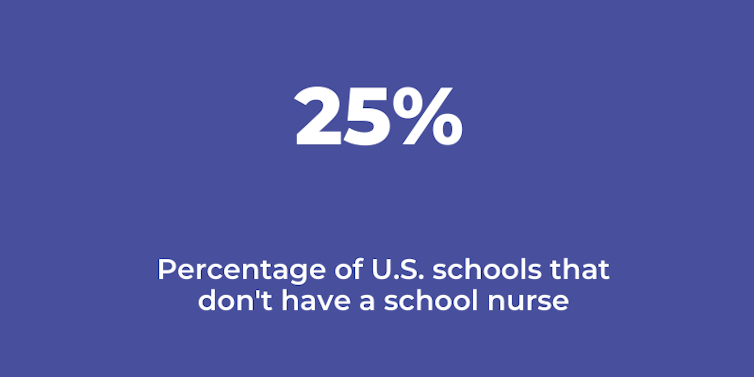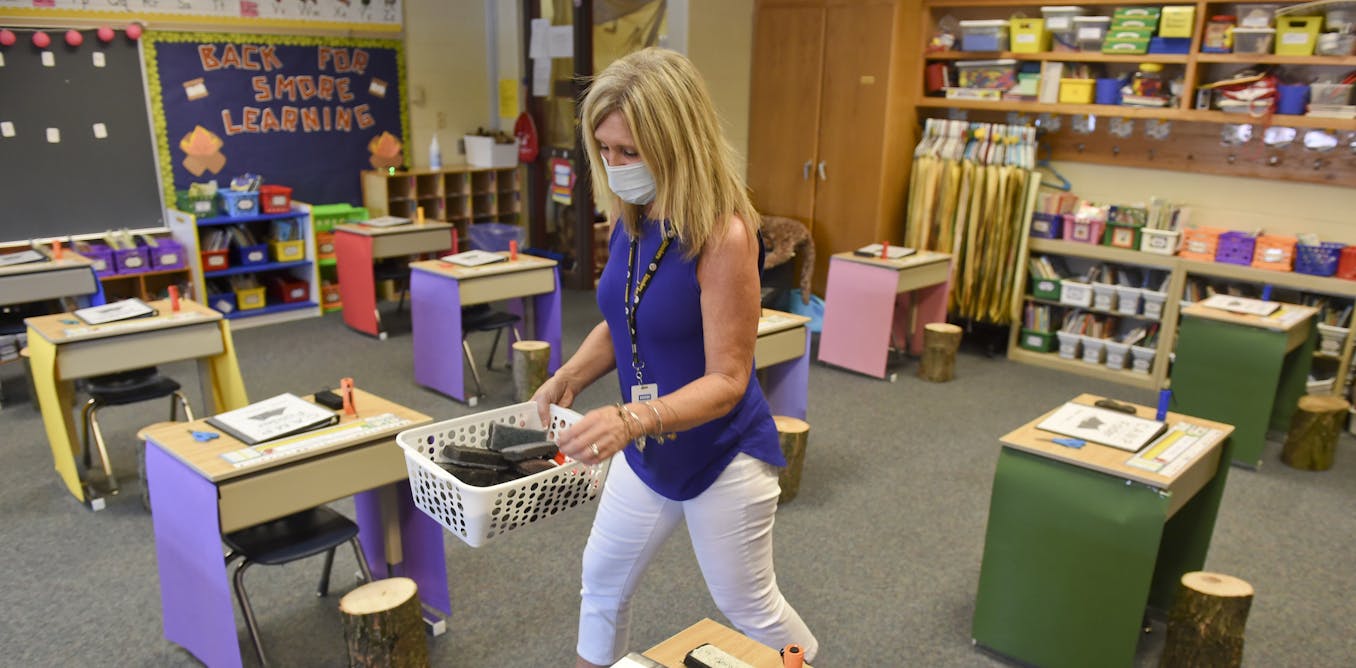
School nurses should be leading the COVID-19 response, but many schools don't have one
School nurses were already overwhelmed, with hundreds of students and staff in their charge. Now, COVID-19 screenings and testing have become their priority.
Aug. 25, 2020 • 4 min • Source

In schools trying to hold in-person classes this fall, students and staff will be looking to one person for guidance with the coronavirus pandemic: the school nurse.
Many schools won’t have one. In those that do, the nurse’s responsibilities are quickly expanding.
Daily screenings for COVID-19 symptoms, assessing illnesses and isolating sick kids are adding to their already heavy work loads as they attend to hundreds of students and staff.
I am a professor of pediatric nursing , and I formerly worked as a pediatric nurse practitioner in a school-based clinic. I recognize the tremendous stress school nurses are facing right now as they navigate getting students back to school safely in the midst of a pandemic.
A quarter of US schools don’t have a nurse
Prior to the pandemic, many school nurses were already overwhelmed.
The CDC recommends schools have one nurse for every 750 students ; however, only around 40% of school districts in the United States actually meet this recommendation, according to the National Association of School Nurses.
Many districts have only one nurse shared between multiple schools. A full quarter of schools have no nurse at all .
Nurses’ new roles amid COVID-19
School nurses play a critical role in child health maintenance that is key to keeping children in the classroom. As greater numbers of children with complex medical needs enter mainstream schools, school nurses increasingly have been tasked with providing more complicated care.
Now, in addition to their regular duties of ensuring students’ immunizations are current, administering medications, and tending to injuries during school hours, many nurses are also responsible for screening students for COVID-19 symptoms, following the latest updates and advice about the virus, and helping decide whether or not a child should remain at school.
Often, they’re working out of small offices with little room for social distancing. Those conditions may have been manageable before, but today, the tight spaces can increase their risk of infection as children suspected of having the virus are sent to the nurse for help.
[ Deep knowledge, daily. Sign up for The Conversation’s newsletter .]
Some nurses are expressing frustration with the lack of resources and with school plans that they say put students and staff at risk.
One Georgia nurse wrote that she quit because she feared her district’s plan likely meant she would get infected and unknowingly spread the virus to students, their families and her own. Others have raised concerns with their districts’ move to return students to classrooms, rather than continuing online learning, while the community infection rate is still high .
When schools do shift to online learning, that doesn’t necessarily mean the nurse’s job ends. While some districts are furloughing nurses during virtual learning, nurses in others have continued connecting with students and working on immunization plans at a time when doctors’ office closures may have put children behind on their shots.
Meg Sorg does not work for, consult, own shares in or receive funding from any company or organisation that would benefit from this article, and has disclosed no relevant affiliations beyond their academic appointment.


